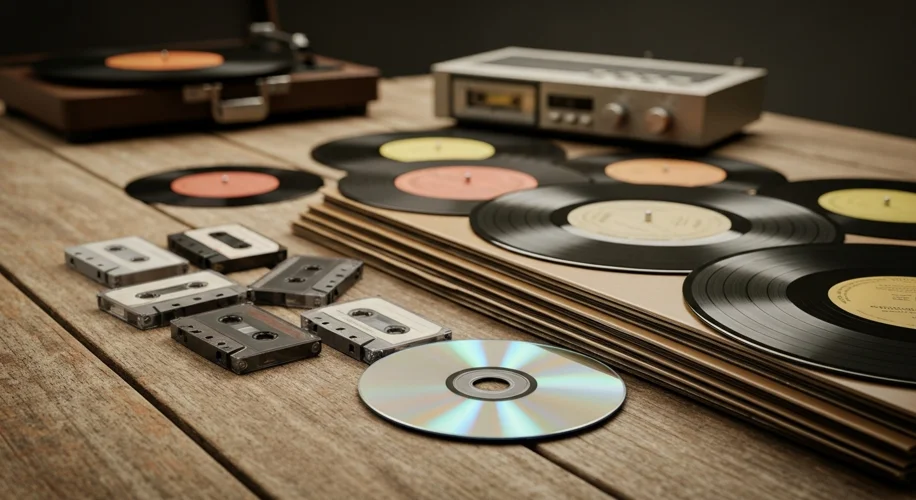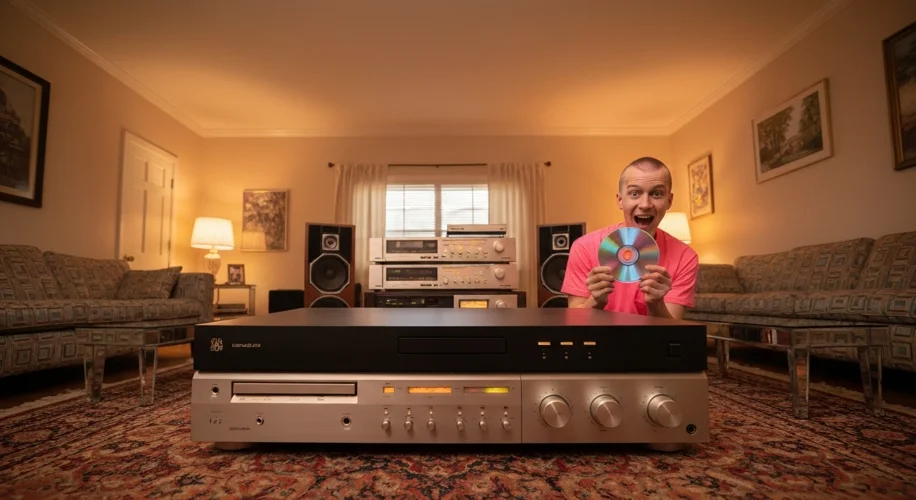In the early 1980s, a quiet revolution was brewing, not in the streets, but in the living rooms and cars of music lovers. It was a revolution heralded by a small, shiny disc that promised pristine sound and unparalleled convenience. On August 17, 1982, the first commercial Compact Disc, Billy Joel’s ’52nd Street’, was released in Japan, marking the dawn of a new era in music consumption. Today, as we approach the 43rd anniversary of this groundbreaking invention, it’s worth remembering how this seemingly simple piece of plastic and aluminum fundamentally reshaped the audio landscape and paved the way for the digital age we inhabit today.
Before the CD, the sonic battlefield was dominated by vinyl records and cassette tapes. Vinyl, with its warm, analog sound, was the audiophile’s darling, but it was fragile, prone to scratches, and offered a limited listening experience. Cassettes, while portable and more durable than vinyl, often suffered from tape hiss, degradation over time, and the frustrating tendency to get tangled or eaten by the player. The desire for a superior listening experience, free from the imperfections of these older formats, fueled the intense research and development that led to the CD.
The story of the Compact Disc is a testament to international collaboration and fierce competition. Spearheaded by Philips in the Netherlands and Sony in Japan, the development of the CD was a monumental undertaking. Engineers grappled with complex challenges, from laser technology to error correction coding, all to create a digital format that could deliver music with unprecedented fidelity. The goal was simple yet ambitious: to create a medium that offered perfect sound quality and near-indestructible durability.

When the CD player first hit the market, it was a luxury item, an aspirational piece of technology. Early adopters were captivated by the crystal-clear sound, the absence of pops and crackles, and the sheer novelty of simply slotting a disc into a machine. Albums like Dire Straits’ ‘Brothers in Arms’, released in 1985, became CD blockbusters, with its pristine recording showcasing the format’s capabilities and convincing millions that this was the future. The transition wasn’t immediate, of course. Many clung to their beloved vinyl collections, but the tide was turning.
The impact of the CD was profound and far-reaching. It not only transformed home entertainment but also fundamentally altered the music industry. Record labels saw an opportunity for massive revenue as consumers repurchased their existing music collections in the new digital format. This era saw a surge in album sales, often referred to as the ‘golden age’ of the music industry, fueled by the CD.
Furthermore, the CD’s digital nature laid the groundwork for subsequent technological advancements. The very principles behind digital audio encoding and storage on the CD paved the way for MP3s, streaming services, and the entire digital music revolution. Without the CD, the transition to digital music, and indeed the wider digital transformation of media, would likely have been a far more uncertain and protracted affair.
But the story of the CD is not just about technology; it’s about the human experience of music. It was the format that accompanied road trips, study sessions, and quiet evenings. It represented a tangible connection to artists and their creations, a physical artifact in an increasingly ephemeral digital world. While streaming services have now largely superseded the CD in daily use, its legacy as the format that democratized high-fidelity audio and ushered in the digital age remains undisputed. So, as we mark this anniversary, let’s take a moment to appreciate the shiny disc that, for a time, held the world’s music in its hands, and in doing so, changed it forever.

